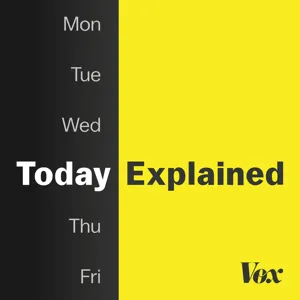Podcast Summary
Cold weather impacts EV battery life and charging capabilities: EV batteries lose charge faster in cold weather and charging becomes more complicated, leading to longer wait times for drivers
The cold weather significantly impacts the battery life and charging capabilities of electric vehicles (EVs), as some Tesla owners have recently discovered. This issue has become more prominent as the number of EVs on the road increases. The battery in EVs loses charge faster in the cold and charging becomes more complicated, leading to long wait times for drivers. This can be a major inconvenience for EV owners who are accustomed to the perceived advantages of electric vehicles, such as faster charging times compared to traditional combustion engine cars. This issue highlights the need for continued innovation and improvement in EV technology to make them more suitable for various weather conditions.
Extreme cold temperatures impact EV performance: Educate yourself on EV operation in extreme temperatures and properly prepare your vehicle to minimize disruptions. Manufacturers and charging station operators need to ensure infrastructure can withstand and function effectively in cold weather.
The performance of electric vehicles (EVs) can be significantly impacted by extreme cold temperatures, which can lead to frozen batteries and malfunctioning charging stations. This can result in stranded vehicles and a frustrating ownership experience for new EV owners, particularly for those with less experience with electric vehicles, such as ride-share drivers. The combination of frozen batteries and non-functioning charging stations created chaos in cities like Chicago during the recent cold snap. It's important for EV owners to educate themselves on the unique challenges of operating EVs in extreme temperatures and to properly prepare their vehicles for cold weather conditions. Additionally, manufacturers and charging station operators need to ensure that their infrastructure is designed to withstand and function effectively in extreme temperatures to minimize disruptions for EV owners.
Challenges of EVs in Cold Weather for Rideshare Drivers: Uber and Lyft incentivize EV adoption, but cold weather poses challenges for EV rideshare drivers, particularly in cities like Chicago. Drivers should precondition batteries before charging and minimize public charging reliance, while charging infrastructure improvements are needed.
The shift towards electric vehicles (EVs) in the rideshare industry is gaining momentum, with companies like Uber and Lyft incentivizing drivers to make the switch by offering higher trip fares for EVs and leasing programs with favorable rates. However, the cold weather in cities like Chicago poses challenges for EV drivers, particularly during the winter months. Tesla, in particular, has seen a surge in adoption due to price cuts, leading to an increase in the number of EVs on the road, and consequently, an increase in videos of drivers discovering the limitations of EVs in cold weather. To ensure a functional and efficient EV experience during winter, drivers should precondition their batteries before charging and minimize reliance on public charging networks. Additionally, the charging infrastructure needs to catch up with the growing adoption of EVs to address the software, availability, and uptime issues.
Challenges of Charging EVs during Winter: During winter, charging EVs at home or work with level 2 chargers is recommended, but not always an option for rideshare drivers. Potential solutions include rideshare companies investing in charging infrastructure or considering China's help in resolving the freezing EV crisis in the US.
During wintertime, charging electric vehicles (EVs) at ultra-fast, DC chargers can be a challenge due to long lines and slow charging speeds. Instead, charging at home or work using a level 2 charger is recommended. However, this might not be an option for many people, especially those who rely on their EVs for work, such as rideshare drivers. A potential solution could be for rideshare companies to invest in charging infrastructure. Another interesting point is that China could potentially help resolve the freezing EV crisis in the US. For affordable wireless plans, consider Mint Mobile's $15 a month offer with a 3-month plan. For fashion-forward springtime attire, check out Quince's organic cotton gauze tiered maxi dresses and European linen blazers, available with free shipping and 360-day returns. Now, let's discuss EVs further with Simon Wright from The Economist.
China's Thriving EV Market: A Disruptor in the Global Automotive Industry: China's ambitious plans and government support have led to a thriving EV market, with 1 in every 3 cars sold being electric or plug-in. Western consumers might learn from China's success and look forward to more affordable EV options.
China is making significant strides in the electric vehicle (EV) market, which could potentially disrupt the automotive industry in the Western world. Rolls Royce's expensive EV, the Spector, showcases the high-end capabilities of EVs, but the affordability issue keeps many people from making the switch. China, with its ambitious plans to dominate the car industry, saw the potential in EVs and invested heavily in the technology, resulting in a thriving EV market. Chinese companies like Geely (owner of Volvo), MG, and BYD are already making an impact, although they have yet to gain significant recognition in the US market. The Chinese government's support, including subsidies, infrastructure development, and protection for domestic battery makers, has contributed to the rapid growth of the Chinese EV market. With 1 in every 3 cars sold being an electric or plug-in vehicle, China is leading the way in EV adoption. As Western consumers continue to grapple with the affordability issue, they might learn from China's success and look forward to more affordable EV options.
Chinese EV Market Surpasses Global Competitors in Sales Volume: Chinese EV market led by BYD is growing rapidly, selling 3 million cars in 2021, all EVs or plug-ins, overtaking Tesla in global sales of pure battery-powered cars, and becoming increasingly stylish, affordable, and desirable for Chinese consumers.
The Chinese electric vehicle (EV) market, led by companies like BYD, is rapidly growing and surpassing global competitors like Tesla in sales volume. In 2017, these companies sold around 400,000 cars, mainly internal combustion engine vehicles. By last year, they had sold 3 million cars, all of which were EVs or plug-in hybrids. In the last quarter of 2021, they even overtook Tesla in global sales of pure battery-powered cars. This growth is significant because Chinese EVs are becoming increasingly stylish, affordable, and desirable, with prices often being much lower than in other markets. As a result, Chinese consumers are not just buying EVs as a statement or luxury item, but as a regular car option. This trend is expected to continue in the West as prices continue to decrease. It's important to note that this market has only started to take off in China in the last few years, with most sales previously being fleet or government vehicles. However, as the cars become more affordable and desirable, individual consumers are now making the switch to EVs in large numbers.
China's Impact on Global Automotive Industry: Chinese EV manufacturers, driven by domestic market dominance and battery production scale, are rapidly expanding into Western markets and disrupting foreign carmakers' market share, potentially creating jobs.
The rapid growth and competitive pricing of Chinese EV manufacturers, driven by their domestic market dominance and scale in battery production, is likely to significantly impact the global automotive industry. Chinese companies are already pricing their EVs lower than competitors, and as they expand into Western markets and localize production, they have the potential to disrupt the market share of foreign carmakers, potentially creating jobs in the process. This trend, which some call "China speed," is happening much faster than in previous examples with Japanese and Korean manufacturers, who only succeeded in localizing production and gaining market share decades later. The Chinese consumer's demand for new models and quick updates is a major driver of this trend. While there may be concerns about the potential impact on American carmakers, the historical examples of Japanese and Korean market entry suggest that the outcome is not necessarily a takeover, but rather a shift in market dynamics.
The automobile industry is transitioning to electric vehicles: China's cheaper EVs and improving infrastructure are driving the shift to electric cars, making them more accessible and competitive in the US market
The automobile industry is undergoing a significant transformation, with companies needing to adopt a software-focused, agile approach to keep pace with competitors like Tesla and Chinese automakers. This shift towards electric vehicles (EVs) is inevitable due to their affordability and cost-effectiveness in the long run. China, with its cheaper EVs, could expedite this transition in the US market by making EVs more accessible and competitive. The infrastructure for charging EVs is also improving, with conversions of existing infrastructure like lamp posts, and will continue to expand as more electric cars hit the roads. The transition to electric may feel far away, but it's an inevitable trend, and the infrastructure will catch up. The industry is experiencing growing pains with the widespread adoption of electricity everywhere. Support for this show comes from Fundrise, where you can invest in real estate and buy low, sell high, even in a challenging market like the current one. Visit fundrise.com/fox to learn more.
Review investment details before investing in Fundrise Flagship fund: Thoroughly examine the investment objectives, potential risks, fees, and expenses of Fundrise Flagship fund before making a decision.
Before investing in the Flagship fund offered by Fundrise, it's crucial to thoroughly review the investment objectives, potential risks, fees, and expenses. This information can be found in the fund's prospectus, which is available on Fundrise's website. This is a significant decision, and it's essential to have a clear understanding of what you're getting into. By carefully considering these factors, you'll be able to make an informed investment decision. Remember, investing always comes with risks, and it's important to weigh those risks against your financial goals and risk tolerance. This is a paid advertisement.






